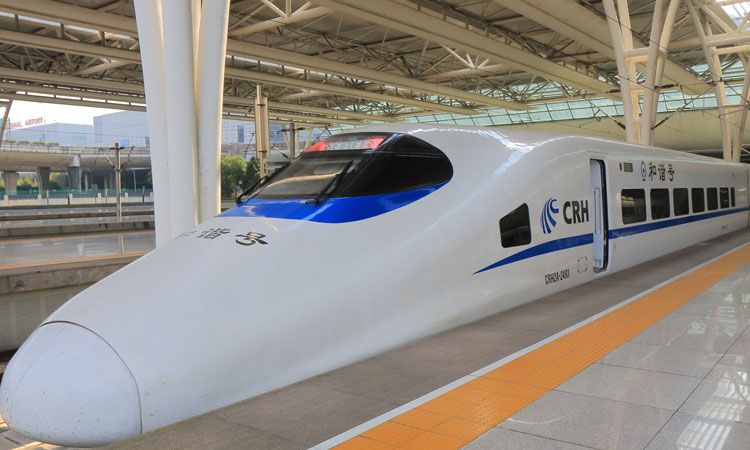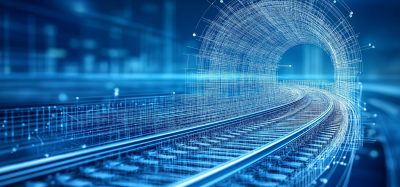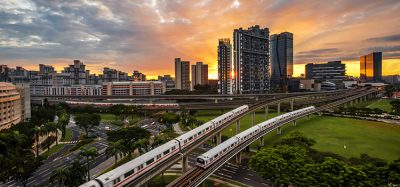The digital era for transport: How China’s transportation system will adapt and evolve
Posted: 20 September 2021 | Huawei | No comments yet
Zhao Yibin, Chief Architect of Integrated Transportation Solutions and Global Transportation Business Unit of Huawei’s Enterprise Business Group, discusses how China’s transportation system is adapting and evolving in this digital era.


Evolving smart transportation with new technologies
Due to their underdeveloped technology, traditional smart transportation practitioners tend to set boundaries for themselves in terms of the services that they offer, so they do not prioritise matters such as infrastructure including roads, bridges, tunnels, as well as operations of transportation enterprises, and passenger services. This has hindered the development of digital and intelligent transportation and led to a restricted knowledge of the solutions available in this field.
As we review the scope of smart transportation and the services involved, new technologies such as AI and big data bring unlimited possibilities.
Edge computing and AI
The route planning for buses and subways is highly dependent on the spatial-temporal features, the origin, destination matrix, or OD matrix, of current and future travel. Take the passenger flow analysis of the traditional public transportation system for example. In these scenarios, the data is mainly collected through the swiping of transport cards. The usual technical path is a model in which data is collected when a passenger swipes his card, and vehicle operation data is uploaded, then traffic survey data is referenced for the model calibration. Because of various factors such as data quality, the difficulties of keeping traffic survey data up to date, and spatial-temporal resolution issues, it is difficult for the OD matrix to accurately reflect the actual status of traffic flows. Consequently, network planning based on such OD matrix is insufficient.
In recent years, the rapid development of computer vision and Artificial Intelligence (AI) has significantly improved the resolution of cameras, the recognition capability of AI algorithms, and the computing cost has plummeted. This means technologies originally used in high-value service scenarios can now be widely adopted in the public transportation industry. The video AI-based head to shoulder recognition person re-identification technology (which matches people across disjointed camera views in a multi-camera system) on the hardware platform, based on a combination of a low-cost vehicle-mounted camera and edge computing, can be applied in public transportation for passenger flow recognition and precise passenger flow analysis at a low cost. It provides network planning with an OD matrix that covers all times of day and all passenger flows, which can greatly improve the precision of spatial-temporal matching of transport capacity and passenger flow distribution, as well as increase computing power without adding vehicles. In this way, the transportation network can accommodate more passengers.
Big data and cloud computing
Highways, especially expressways, are the lifeline of social and economic operation. For many years, freight transport on highways accounted for more than 70 per cent of China’s total freight transport. That proportion has continued to rise in recent years and is now 78 per cent. The trunk highways are all fully loaded, or even overloaded, which is a great challenge to the highway system. To tackle this issue, the usual approach in the industry is to build new roads or to reconstruct or expand existing expressways e.g., expanding four-lane roads into six-lane ones and eight-lane ones. The drawbacks of projects like these are that they are very costly and they require vast areas of land that is typically used as farmland.
New technologies such as 5G, AI, IoT, and big data enable smart transportation practitioners to consider how to implement the digitalisation and informatisation of transportation infrastructure, from a deeper and more integrated perspective.
Based on cloud computing and big data, for complex computing tasks such as holographic perception of a single road section, situational awareness of the road network in an entire area, minute-level short-term prediction, as well as management and control simulation and deduction in complex scenarios, expressway operation staff can now implement proactive and refined management and control measures. This includes ramp control, flow division and merging guidance, section-based rate limiting, and temporary opening of the emergency lane. In this way, minor traffic accidents won’t interrupt traffic flow, soft capacity expansion is achieved without any need for significant physical reconstruction or expansion, and the vehicle passing efficiency can be boosted with only small reconstruction or expansion.
The digitalised joining points of public transport
Different modes of transport (bus, subway, and private car), different transportation scenarios (urban transportation system and inter-city transportation system), and different service flows (supervision flows of transportation bureaus and operation flows of transportation enterprises) are like cold and warm ocean currents, which can bring about great changes when they meet. The joining points of modes, scenarios, and flows e.g., traffic hubs such as highspeed railway stations and airports, and planning and optimisation of the integrated public transportation line network as the joining point of service supervision flow and operation flow of public transportation) are like those of cold and warm currents. The digitalisation and intelligence of these joining points can really make a difference.
Smart transportation practitioners should gradually abandon single-domain digitalisation and strive to remove process breakpoints, implement multi-mode collaborative operations, and achieve cross scenario in-depth development, progressing solutions that can maximise business value for customers.
Cross-transportation modes
In recent years, urban rail transit is the focus of China’s transportation construction. As the most important public transport mode in cities, urban rail transit bears most of the public transportation traffic. Meanwhile, the development of traditional ground public transportation also faces great challenges. However, due to the split management and lack of technologies, ground public transportation and urban rail transit are hard to coordinate. In some regions, they are even competing, resulting in the waste of public resources and inefficient operations.
Urban rail transit is designed to provide long-distance travel services across urban functional areas. Shuttle services are required to take passengers to and away from metro stations, and buses can meet this need. Based on the cloud and big data technology, the integrated OD analysis and transportation capacity matching and dispatch, as well as AI-based video analysis can apply the respective strengths of buses and subways, build a complete industry chain that covers all passengers, and provide one-stop, seamless travel services. Therefore, achieving the goal of increasing transportation capacity with computing power.
Cross-scenario
The continuous improvement of digital and information-based technologies in the transportation domain boosts the efficiency and security of the transportation system, reduces the carbon emission of the entire transportation system, and enhances the transportation experience for passengers.
Airports, wharfs, and high-speed railway stations are hubs of urban transportation as well as the windows displaying the city image and the operation efficiency of the transportation system. They connect inter-city and intra-city transportation scenarios, transporting most of the passengers within a city. These hubs need to gather the departing passengers from various places in the city efficiently and conveniently. They also need to provide safe, convenient, and swift access for arriving passengers to enter the urban transportation system (bus, rail, and taxi). Therefore, transportation hubs must be able to accurately predict passenger flows and predict and dispatch the transportation capacity between multiple transportation modes.
These core capabilities need to be designed and developed based on digitalisation of single domains, comprehensive AI and big data to accurately match the transportation capacity with the passenger flow, acting quickly, securely, and conveniently to gather and divert passengers in the hub.
The continuous improvement of digital and information-based technologies in the transportation domain boosts the efficiency and security of the transportation system, reduces the carbon emission of the entire transportation system, and enhances the transportation experience for passengers.
New technologies such as 5G, AI, IoT, and big data enable smart transportation practitioners to consider how to implement the digitalisation and informatisation of transportation infrastructure, from a deeper and more integrated perspective. This way, they can continuously expand smart transportation’s service boundaries and gradually shift from infrastructure digitalisation to service process digitalisation. Ultimately, this will enable them to plan and design innovative and smart comprehensive transportation solutions that span across different facilities, transportation modes, scenarios, and service processes.
Huawei will host Huawei Connect 2021 online from 23 September to 31 October 2021, complete with live broadcasts, digital exhibitions, and the opportunity to connect with industry experts. The theme of this year’s event is Dive into Digital. We’re going to dive deep into the practical application of technologies like cloud, AI, and 5G in all industries, and how they can make organisations of all shapes and sizes more efficient, more versatile, and ultimately more resilient as we move towards economic recovery.
For more information, please contact the Huawei local team or check out this website here.
This article has been adapted from ICT Insights 04/2021, issue 30.
Stay Connected with Global Railway Review — Subscribe for Free!
Get exclusive access to the latest rail industry insights from Global Railway Review — all tailored to your interests.
✅ Expert-Led Webinars – Gain insights from global industry leaders
✅ Weekly News & Reports – Rail project updates, thought leadership, and exclusive interviews
✅ Partner Innovations – Discover cutting-edge rail technologies
✅ Print/Digital Magazine – Enjoy two in-depth issues per year, packed with expert content
Choose the updates that matter most to you. Sign up now to stay informed, inspired, and connected — all for free!
Thank you for being part of our community. Let’s keep shaping the future of rail together!
Related topics
5G, Artificial Intelligence (AI), Big Data, Digitalisation, Internet of Things (IoT)








